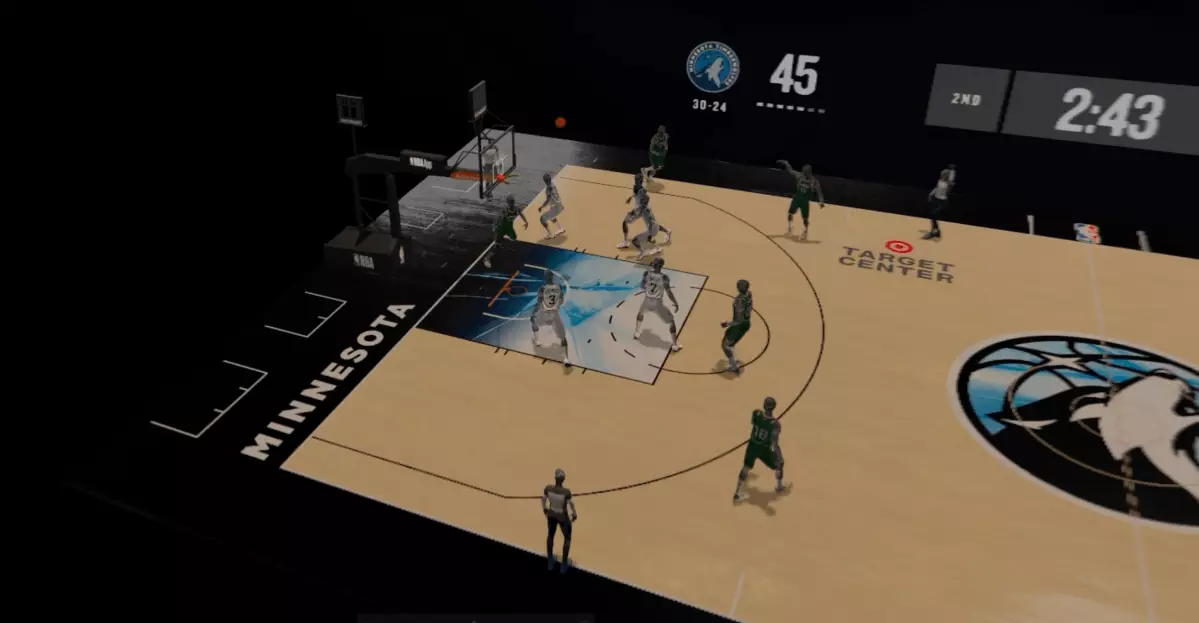The landscape of sports viewing is poised for transformation, particularly with the NBA’s recent introduction of its augmented reality (AR) feature called Tabletop. Designed exclusively for NBA League Pass subscribers, this feature uniquely combines the excitement of live gameplay with the innovative capabilities of modern technology, creating an immersive experience that blurs the lines between the real and digital sports worlds.
At the heart of Tabletop is the goal of enhancing viewer engagement. By allowing fans to project a virtual basketball court into their own spaces during live games, the NBA is tapping into a growing trend of immersive technology in sports entertainment. This development is not merely an aesthetic upgrade; it represents a potentially transformative shift in how fans interact with the game. The ability to visualize gameplay in augmented reality could revolutionize the viewer experience, making it more interactive and engaging, which is crucial in maintaining fan interest in a competitive entertainment landscape.
This feature uses digital avatars that mirror actual players’ movements, creating a captivating representation of the game. Users can track plays as if they were physically present courtside—yet from the comfort of their homes. Such technology not only highlights the sophistication of the NBA’s approach but also serves as a response to the evolving demands of fans who increasingly seek unique and valuable ways to consume sports media.
The implementation of Tabletop is impressive, especially considering that it debuted as an alpha feature. The execution allows users to differentiate individual players through visual cues like jersey colors and player names, which enhances the overall experience. Although the avatars might share a similar design, the dynamic display of gameplay ensures that viewers can follow their favorite players without confusion. This mirrors a growing trend in digital media, where gaming and sports converge, creating new touchpoints for fan engagement.
Nevertheless, some technical shortcomings have been reported. For example, a slight delay between the visual display and the actual game commentary could disrupt the experience for some users. It’s noteworthy that in the case of local market games, users can still utilize the feature even when video isn’t available, ensuring they remain engaged with the game in some form. However, Tabletop was absent for all out-of-market games during initial testing, which raises questions about its reliability and versatility moving forward.
The Competition and Market Comparison
Interestingly, some features of Tabletop call to mind similar technology applied in other sports, reminiscent of the Lapz Vision Pro app that was well-received during Formula 1 races. However, the shutdown of that service illustrates the volatile nature of tech solutions in sports media. The NBA’s venture into AR with Tabletop is a bold move, yet it accentuates the larger challenges of sustaining such innovative services amid competition and market fluctuations.
Unlike the F1 app, which faced operational challenges leading to its downfall, the NBA seems to be positioning itself strategically by offering this feature via the NBA League Pass subscription model. This could bolster subscription numbers if fans perceive value in the AR experience. The ability to monetize enhanced features in live sports viewing becomes increasingly crucial as leagues strive to maintain relevance in an era where streaming and viewer engagement are paramount.
Looking Ahead: What Does This Mean for the Future?
The NBA’s Tabletop feature shines a spotlight on the future potential of AR in sports broadcasting. As technology continues to evolve, so too will the ways in which fans interact with their favorite games. Expect future enhancements that may integrate additional metrics, real-time analytics, and interactive capabilities that allow viewers to influence the viewing experience.
For now, the introduction of Tabletop serves as a significant step in a new direction for live sports viewing. It invites speculation about what lies ahead in sports tech while highlighting how leagues like the NBA are making determined strides to keep pace with modern technology trends. If they can refine and expand this feature—along with its accessibility—the NBA could set a new standard for how sports are consumed in the digital age.
Tabletop is more than just a novelty; it represents a critical juncture in the convergence of sports and technology. As the NBA continues to innovate, fans around the world will be watching closely to see how these developments unfold.

